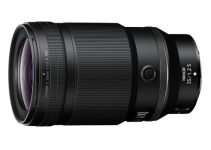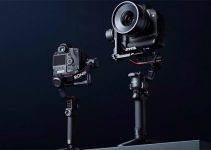Powerful and immersive cinematic images are something that we all as filmmakers are avidly striving for to make our films more appealing to our audience. Unarguably, it’s one of the most challenging tasks that many of us stumble upon and need to tackle with, especially in the beginning of our filmmaking journey. Many still believe that having the latest and most expensive gear is a mandatory premise to success.
Even though this might help, it’s only a small part of the puzzle. So, the big question still remains the same. Can we create powerful cinematic images with a cheap camera and some modest equipment? Simon Cade, the creator of DSLRguide, shares his insights on the topic below.
Creating cinematic film look on a budget can be a serious challenge, but it’s definitely achievable goal even without using loads of equipment. Using pro lights is probably one of the easiest ways to add more production value to your shots. But, when you don’t have access to any of these using natural light can still be a viable solution helping you to produce some great results.
As Simon points out, working with natural light is all about choosing locations that already have decent light and then blocking bits out of it if necessary. For instance, using a window on a cloudy day as a soft backlight might significantly improve your otherwise flat looking shot.
Further, this technique might work well for close up, little details and insert shots. But, don’t make the mistake of thinking that you need more and more light to make your shots more professional. Quite the contrary. The right balance between shadows and light will give you the results that you’re looking for. This rule is valid not only when you are using a professional light equipment for your scenes, but also when utilizing natural light.
Even more important for this type of scenes is picking the right location and colours, thus evoking certain emotions and senses with your scene and the rich, cinematic images in particular. Picking the right location and setting the most suitable mood of your scene can be captured even with the modest equipment such as an affordable DSLR, a microphone and a travel tripod.
The main takeaway here is that the difference is not the camera that you are using, but what is in front of it. So be careful when you are picking your location and consider the props, locations and costumes of your talents rather than worrying too much about what you can do with this images later in post.
At last, but not least, keep in mind that the majority of the emotion in most films comes directly from your main characters and the storyline, so these are the most prominent aspects of your production that should be mostly considered. Further, supporting this emotion with the visuals you tend to create, where even the smallest detail counts, is also very important.
In conjunction with your unique perspective as a filmmaker and artist, these are the most valuable assets you have at your disposal. So, be creative and always look for these small things that would create a visual and sensory impact on your audience and will immerse the viewers even deeper, providing a rich and truthful experience inspired by the world that you are creating while telling your story.
[source: DSLRguide]
Disclaimer: As an Amazon Associate partner and participant in B&H and Adorama Affiliate programmes, we earn a small comission from each purchase made through the affiliate links listed above at no additional cost to you.



